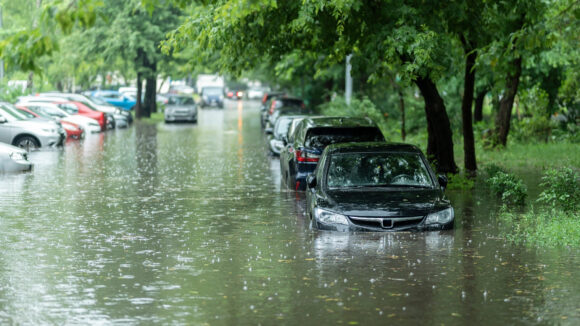The way communities nationwide recover from natural disasters may never be the same. The National Flood Insurance Program (NFIP) expired on September 30. Simultaneously, pending congressional legislation stands to transform the Federal Emergency Management Agency’s (FEMA) Public Assistance (PA) program.
These two turning points will likely shift billions of dollars in disaster recovery costs off the federal governments’ balance sheet. Yet these changes do not have to trigger uncertainty and doubt for public officials, or for the agents and brokers who advise them. Parametric insurance models offer a fresh alternative capable of closing funding gaps and transforming disaster recovery.
How legislation is evolving
The bipartisan Fixing Emergency Management for Americans Act of 2025 advanced out of a House committee in early September. It aims to reduce assistance for smaller incidents, allowing FEMA to focus on more severe disasters. Less costly incidents would fall under the purview of “non-federal governments, survivors, and private entities.”
Should this shift happen, state and local governments could be on the hook for $41 billion in recovery costs over a 16-year period, according to The Urban Institute. Two specific changes raise additional concerns:
- Higher disaster eligibility threshold. FEMA’s per capita indicator (PCI), the formula used to decide whether a disaster qualified for federal aid, would increase from $1.89 to $7.56. Looking back at 870 disaster declarations from 2008-2024, The Urban Institute found that 71% would not have met the new threshold, eliminating about $15 billion in PA communities once relied upon.
- Lower federal cost share. FEMA would return its cost-sharing floor to 75% of recovery expenses, down from the 90% or even 100% of shares sometimes granted in major disasters. Instead, states and municipalities would shoulder a larger share of rebuilding costs.
Cost burdens shift as losses escalate
The proposed shift in cost burdens comes at a particularly challenging time for state and local governments. Many are already navigating aging infrastructure and shrinking budgets, while their constituents are reeling from the effects of more frequent and severe connective storms (SCS).
Although FEMA will still be responsible for losses associated with catastrophic events under the proposed legislation, more frequent events like winter storms, severe convective storms and flooding events may no longer receive federal assistance. Consider the September 2024 storm in Oklahoma City that damaged 35,000 homes in a single day, or the over 180,000 homes in Texas that were damaged by hailstorms throughout 2024.
These higher frequency events can quickly disrupt state and local budgets, which is why our industry must look toward alternative disaster recovery approaches.
The potential of parametric insurance
Unlike traditional insurance, which pays based on damages incurred, parametric policies pay out based on pre-defined triggers. A hail policy, for example, could be triggered when an insured has suffered damage, with the payout determined by the size of hailstones at the insured’s location.
Parametric insurance is gaining in popularity, potentially growing to a market value of $34.4 billion by 2033, according to Allied Market Research. Public entities across the United States have been using parametric insurance for more than 15 years and delivering encouraging results, including faster payouts, more flexible funding and coverage for often underserved risks. And, Puerto Rico’s adoption of parametric insurance has been recognized as satisfying FEMA’s requirement to carry certain levels of coverage to remain eligible for federal aid.
How might parametric programs work in disaster recovery? Consider Florida’s response to hurricanes Ian and Nicole. The proposed FEMA changes would have consumed 21% of the state’s rainy-day fund ($563 million). A parametric policy—paired with a robust risk mitigation and insurance strategy—would have triggered a faster response by private insurers and reduced the financial burden on federal, state and local authorities.
How agents and brokers can help
Agents and brokers can and should help raise awareness for the vital role of parametric insurance in disaster recovery. Consider the following:
- Clarify the impact. Help customers understand how FEMA’s rule changes could affect local recovery funding. Use past weather events to illustrate where gaps may emerge.
- Leverage local connections. Agents, who do not work directly with government entities likely know community leaders on school boards or local nonprofits who could benefit from learning more about parametric insurance options.
- Engage with insurers early. Parametric capacity is finite. Building relationships now with insurance specialists offering these products will help agents present credible options once demand accelerates.
As FEMA steps back from smaller and mid-sized disaster recovery, our industry can step forward. Parametric coverage may help fill in future funding gaps so our communities can rebuild. Agents and brokers can help connect the dots, translating the upcoming policy shifts into sound risk reduction strategies, creating a more resilient model for recovery.
Topics FEMA
Was this article valuable?
Here are more articles you may enjoy.



 North Carolina Sting Operation Alleges Roofer Damaged Shingles to File Claim
North Carolina Sting Operation Alleges Roofer Damaged Shingles to File Claim  Aon Adds to List of Brokers Suing Howden US for Alleged Poaching, Theft
Aon Adds to List of Brokers Suing Howden US for Alleged Poaching, Theft  ‘Door Knocker’ Roofers Were Everywhere. NC Farm Bureau Saw an Opportunity
‘Door Knocker’ Roofers Were Everywhere. NC Farm Bureau Saw an Opportunity  Court Awards $32 Million Over Premature Baby’s Death at Yale Hospital
Court Awards $32 Million Over Premature Baby’s Death at Yale Hospital 


